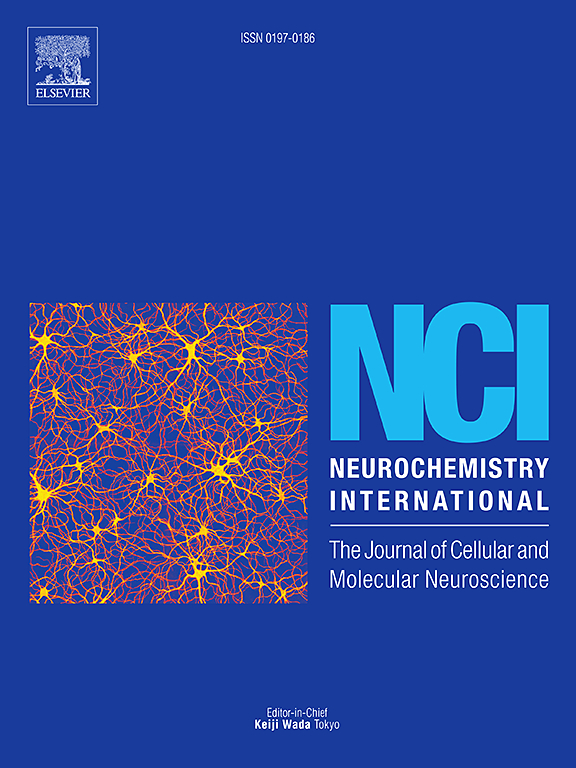28种合成大麻素受体激动剂对1型和2型大麻素受体的体外药理活性
IF 4
3区 医学
Q2 BIOCHEMISTRY & MOLECULAR BIOLOGY
引用次数: 0
摘要
合成大麻素受体激动剂(SCRAs)是一类新型精神活性物质,其在非法市场的流行率持续增长。Δ9-tetrahydrocannabinol (THC)是大麻中存在的主要致醉化合物,众所周知,它在1型和2型大麻素受体(CB1R, CB2R)上都具有部分激动剂的作用。与四氢大麻酚不同,迄今为止表征的scra通常表现为CB1R和/或CB2R完全激动剂。这些配体的高效力和完全激动作用被认为驱动scra的毒性,包括精神病、呕吐和心动过速。在本研究中,28种化合物(包括参考配体CP55,940和THC)在稳定表达任一受体的中国仓鼠卵巢(CHO-K1)细胞中进行了结合亲和力、Gi蛋白依赖性cAMP抑制和βarrestin2募集的评估。放射性配体结合结果表明大麻素受体亚型之间普遍缺乏选择性。在信号分析中,大多数化合物表现出预期的完全激动作用,具有低纳摩尔效力的SCRAs特征。许多化合物对cAMP的抑制作用优于βarrestin2的募集,在CB2R中尤其如此,其中一些化合物在βarrestin2募集试验中无活性。然而,尽管本文讨论了潜在的模式,但在测试的scra之间没有明确的结构-活性关系,可以解释它们的选择性、效力、功效或偏倚。总的来说,我们的数据支持越来越多的证据表明大麻素受体适应多种配体,并且化合物功能可能由尚未很好表征的因素决定,例如结合动力学。本文章由计算机程序翻译,如有差异,请以英文原文为准。
In vitro pharmacological activity of twenty-eight synthetic cannabinoid receptor agonists at the type 1 and 2 cannabinoid receptors
Synthetic cannabinoid receptor agonists (SCRAs) are a class of novel psychoactive substances whose prevalence in illegal markets continues to grow. Δ9-tetrahydrocannabinol (THC) is the primary intoxicating compound present in cannabis and is well-known to behave as a partial agonist at both the type 1 and 2 cannabinoid receptors (CB1R, CB2R). Unlike THC, the SCRAs characterized to date generally behave as CB1R and/or CB2R full agonists. The high potency and full agonism of these ligands are thought to drive the toxicity of SCRAs, including psychoses, emesis, and tachycardia. In this study, twenty-eight compounds (including the reference ligands CP55,940 and THC) were evaluated for binding affinity, Gi protein-dependent inhibition of cAMP, and βarrestin2 recruitment in Chinese hamster ovary (CHO–K1) cells stably expressing either receptor. Radioligand binding results demonstrate a general lack of selectivity between cannabinoid receptor subtypes. In signaling assays, most compounds displayed the anticipated full agonism with low nanomolar potency characteristic of SCRAs. Many compounds displayed bias for the inhibition of cAMP over the recruitment of βarrestin2, and this was especially true at CB2R, where several compounds were inactive in the βarrestin2 recruitment assay. However, no clear structure-activity relationship emerged among the tested SCRAs that could account for their selectivity, potency, efficacy, or bias, although potential patterns are discussed herein. Overall, our data support growing evidence that the cannabinoid receptors accommodate a diverse range of ligands, and that compound function may be dictated by factors that are not yet well characterized, such as binding kinetics.
求助全文
通过发布文献求助,成功后即可免费获取论文全文。
去求助
来源期刊

Neurochemistry international
医学-神经科学
CiteScore
8.40
自引率
2.40%
发文量
128
审稿时长
37 days
期刊介绍:
Neurochemistry International is devoted to the rapid publication of outstanding original articles and timely reviews in neurochemistry. Manuscripts on a broad range of topics will be considered, including molecular and cellular neurochemistry, neuropharmacology and genetic aspects of CNS function, neuroimmunology, metabolism as well as the neurochemistry of neurological and psychiatric disorders of the CNS.
 求助内容:
求助内容: 应助结果提醒方式:
应助结果提醒方式:


